Suborder Apocrita Rank Species | Superfamily Vespoidea | |
 | ||
Similar Dasymutilla, Velvet ants, Dasymutilla gloriosa, Mutilla, Eastern cicada killer | ||
Dasymutilla occidentalis (red velvet ant or eastern velvet ant), is a species of parasitoid wasp native to the eastern United States. It is commonly mistaken for a member of the true ant family, as the female is wingless. The species ranges from Connecticut to Missouri in the north and Florida to Texas in the south. Other common names include cow ant and cow killer.
Contents
- Cow killer dasymutilla occidentalis or the red velvet ant
- Appearance and features
- Defense
- Mating behavior
- References
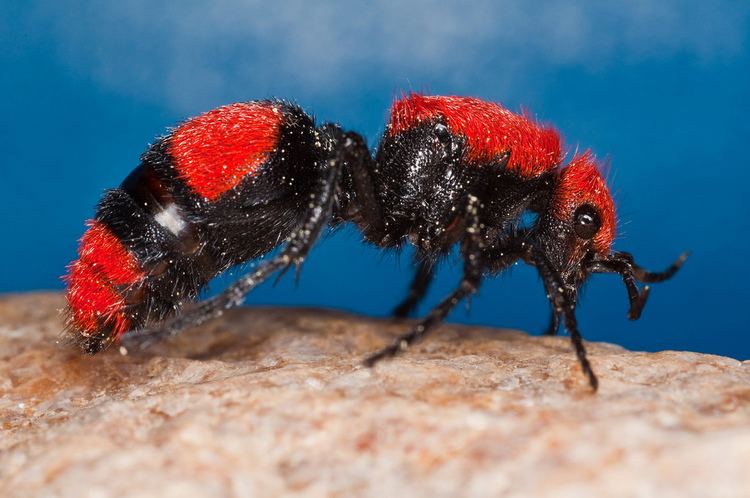
The eastern velvet ant is the largest of the velvet ant species in the United States, attaining an approximate length of 0.75 in (1.9 cm). Adults display aposematic coloration, consisting of black overall coloring with an orange-red pattern on the dorsal surface of the thorax and abdomen. They are covered in dense, velvet-like hair.
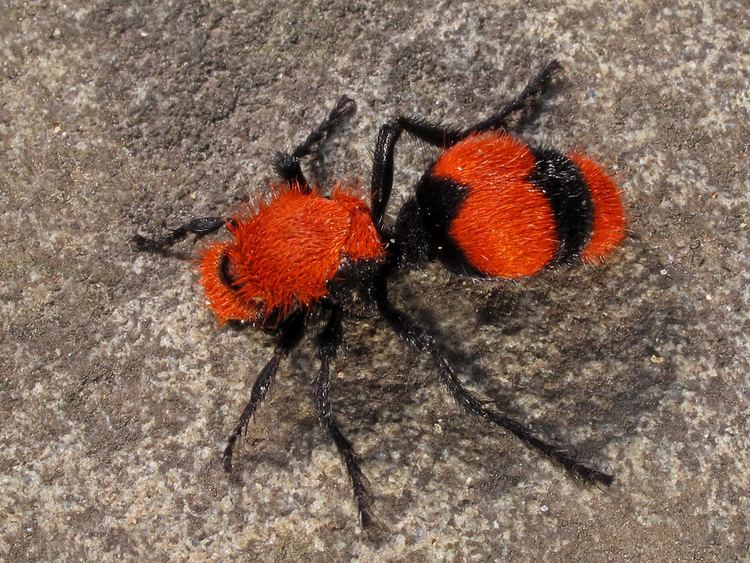
Females are capable of an extremely painful sting, hence the name "cow killer". They are quick-moving and often take a defensive posture when threatened. They seek out the brood cells of Eastern cicada killers and other large ground-nesting members of Crabronidae, where they deposit an egg onto a host larva. The egg quickly hatches into a white, legless grub, which consumes the host and goes through several larval stages prior to pupa formation. Unlike the females, males have dark, translucent wings and do not deliver a sting.
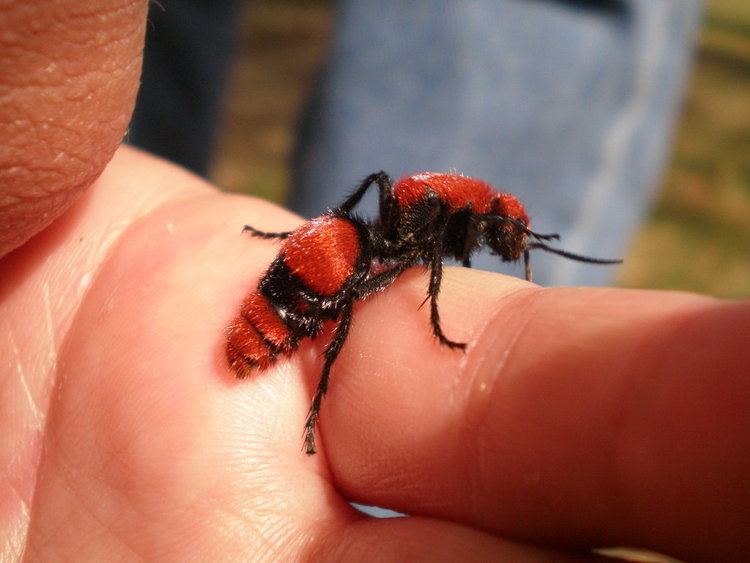
Cow killer dasymutilla occidentalis or the red velvet ant
Appearance and features
Commonly mistaken for an ant, because of its appearance and its common name, it is actually a unique species of wasp in which the females are wingless. It can be recognized by its black and orange-red striped coloring. When looking for food and a place to nest, females crawl rapidly along the ground. They also make a squeaking noise to communicate concern. Males fly low over grass in search of female mates. One is able to determine males from females by whether the specimen can sting, because only females have the ability to sting, and whether the specimen has wings, as only males have wings.
Defense
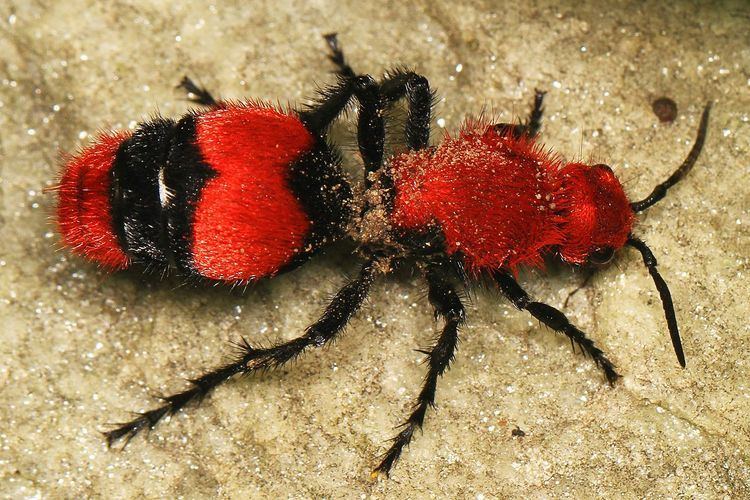
The velvet ant has multiple defensive strategies, but is best known for its painful sting, earning it the nickname of "cow killer". Its defenses include the ability to run fast and evasively, warning coloration, stridulatory sounds, a chemical secretion, and venom.
Mating behavior
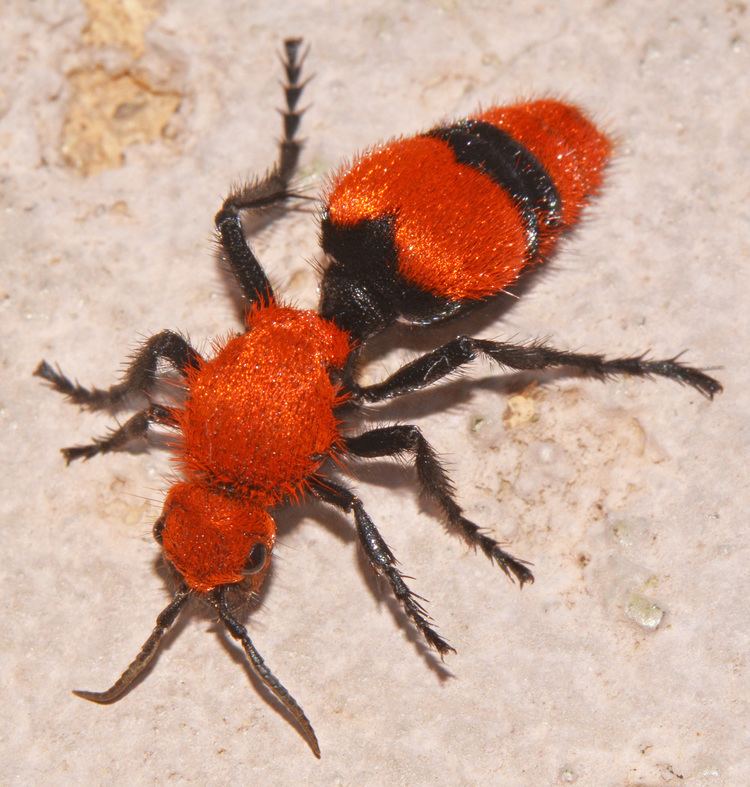
When mating, these insects make distinct sounds. Both males and females produce stridulation, which is the noise that is created when parts of their abdomens are rubbed together. Males can also making a honking noise by vibrating their wings. Also, males can partially immobilize the female and cause her to alter her stridulatory chirp. It appears that these sounds are an important part of mating for these insects.
